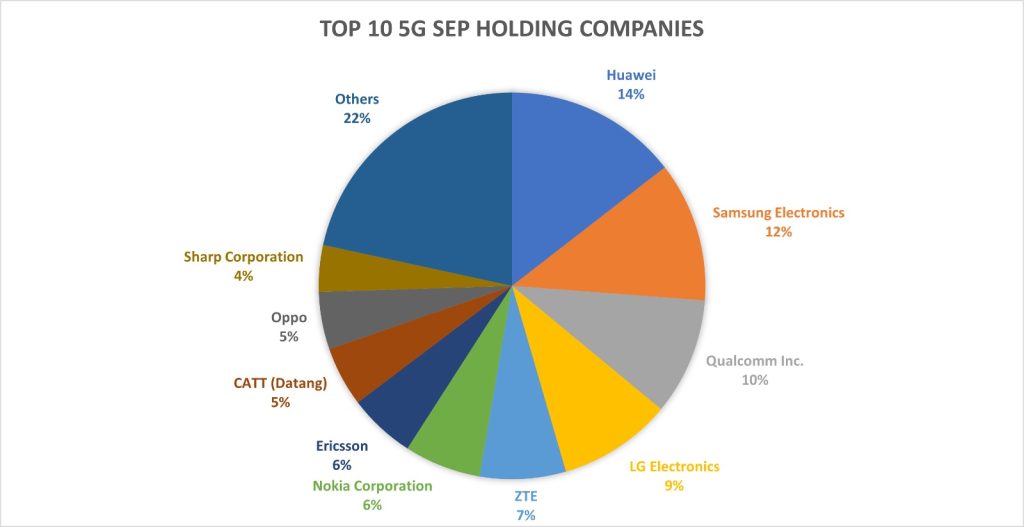5G
Expanding the manufacturing base for 4G/5G domestic stacks – Significance of standard essential patents

The recently concluded IMC 2023, centered around Global Digital Innovation, focused on bolstering India’s role as a leader in creating, producing, and exporting advanced technologies. It placed special emphasis on 5G and 6G technologies. In the inaugural address, the Prime Minister emphasized the importance of advancing the current achievements in mobile and electronics manufacturing. He highlighted that self-sufficiency across the entire manufacturing process is crucial for cyber-security. He also stressed that maintaining security is more manageable when every aspect of the value chain is under national control, including hardware, software, and connectivity.
Make in India is the key pillar of the Prime Minister’s vision, and the strides made in manufacturing in the last couple of years itself are worth noting. From the start of successful roll out of domestic stacks-based end-to-end 4G system in the BSNL network to getting the 5G stacks ready for further upgradation of the proposed network are significant milestones in this direction.
In March 2023, the Department of Telecommunications, floated Bharat 6G vision document with a vision statement “Design, develop and deploy 6G network technologies that provide ubiquitous intelligent and secure connectivity for high-quality living experience for the world.”
Indian industry, with effective policy backing from the government, is establishing itself in the forefront of mobile technologies for the global market. This is achieved through the manufacturing of domestically designed telecom products.
Mobile telecommunications industry is driven by a heavy reliance on standardization, which is made up of a great number of innovations protected by Standard Essential Patents (SEPs). 2G (GSM), 3G (UMTS), 4G (LTE), 5G, and Wi-Fi networks rely on thousands of patented technologies to work.
The ETSI IPR policy defines Standard Essential Patents as those standards that rely on technical contributions from various sources. These contributions may contain patented technologies, which are commonly known as Standard Essential Patents (SEPs). When it is not possible on technical grounds to make or operate equipment or methods, which comply with a standard without infringing an SEP, i.e., without using technologies that are covered by one or more patents, we describe that patent as essential.
The ETSI IPR Policy, which is part of the ETSI Directives, seeks to reduce the risk that our standards-making efforts might be wasted if SEPs are unavailable under fair, reasonable, and non-discriminatory (FRAND) terms and conditions.
The primary aim of the ETSI IPR Policy is to strike a fair balance between rewarding IPR holders for their essential patents used in ETSI standards and ensuring that implementers can access the technology outlined in ETSI standards on fair, reasonable, and non-discriminatory (FRAND) terms.
Technical standards benefit both manufacturers and consumers by easing product adoption, promoting compatibility and interfacebility of network components in a worldwide network of networks, and fostering an environment conducive to competition. However, it is important to note that standards can also present an opportunity for licensors to exert market power.
The possessor of patents, asserting their indispensability to a given standard, wields significant influence over manufacturers and licensees entangled within the confines of the said standard. This leverage empowers the patent owner to impede progress by imposing exorbitant royalties upon those who utilize products adhering to the established standard.
In the domain of 5G Standard Essential Patents (SEPs), the Asia-Pacific region is notably prominent, with China and South Korea taking the lead in the number of declared patent families for 5G. Following closely behind are the United States and Europe. From 2017 to 2022, each of these countries or regions made significant contributions in terms of declared SEP families.

(Source: Google Search)
Talking about standard-essential patents for 5G, India’s presence is very negligible even in terms of patent filing.
Standardizing telecom technologies through SEPs is an inherently lucrative industry. According to market reports, licenses for 2G, 3G, and 4G standards are granted to mobile phone manufacturers, equipment manufacturers, and other economic operators. The resulting royalties from these standards amount to approximately €18 billion per year.
In fact, whether the company is an SEP owner or an SEP implementer, an Indian manufacturing industry, including startups and SMEs, is much more likely to have a worse negotiating position than a large company in licensing negotiations.
Ensuring that licensing conditions adhere to the principles of fairness, reasonableness, and non-discrimination presents a challenge for small- and medium-sized enterprises (SMEs). SMEs typically lack access to information regarding the actual value of patents, setting them at a disadvantage compared to larger corporations. Unlike larger MNCs, SMEs often struggle to assess whether the conditions offered by the other party meet the criteria of being fair, reasonable, and non-discriminatory.
In negotiations, major corporations, accustomed to dealing with licensing agreements, frequently impose non-disclosure agreements, making it challenging for SMEs to gather market information on licensing conditions. Moreover, negotiations among large players often involve a reciprocal exchange, where each company, whether a standard essential patent (SEP) implementer or owner, possesses an extensive patent portfolio and can simultaneously act as a licensor and a licensee.
This dynamic contrasts with the situation faced by SMEs, which generally have either no patents or only a limited number. SEP holders are usually large companies with very big patent portfolios. When SMEs want to implement standards that contain SEPs, they are confronted with claims that often relate to a high number of patents.
Another challenge for SMEs, as well as individuals who have not been directly involved in drafting a particular standard, lies in verifying the essentiality of declared patents, whether it is genuine or just a claim.
Against this background, the Department of Telecom indeed needs to recognize the problem and protect its domestic industries and facilitate design-led domestic industry, including start-ups and SMEs, who are investing heavily in emerging mobile technologies in all the issues related with the licensing of standard essential patents (SEPs).
In July this year, the government took a decision to make the Centre for Development of Telematics (C-DoT) as the nodal facilitation agency to front-end on telecommunications IPRs and patents, where it will act as a facilitator for standards essential patents (SEP) negotiations, without having any financial liability or obligations toward any party.
One of the priorities assigned to C-DoT is to actively participate in IPRs/SEPs-related licensing negotiations on (FRAND terms) between/amongst domestic or global IPR/SEP holders or prospective licensors on behalf of the Indian technology entities, as and when approached by them.
This is a welcome step to support the domestic ecosystem regarding IPR/SEP-related issues. But C-D0T has a limited mandate to act as a facilitator only.
To enable the effective implementation of the above activities, C-DoT is expected to engage professional IPR-technical and legal experts to strengthen its IPR resources. It is already a four-month-old order and to give pace to this exercise, it is important for C-DoT to work out a detailed blueprint objectively, including various critical aspects/scope, involved in the licensing of the SEPs and role responsibilities of various entities, involved to carry out this activity.
Time is of the essence, hence it is crucial for C-DoT to popularize the scheme through various outreach initiatives, if not done already, so as to sensitize the stakeholders to take the benefits of the same.
However, there appears no firm mechanism in the blueprint of above responsibility entrusted to C-DoT to ensure the success of the licensing of SEPs at competitive terms, as it is being done at individual industry level, which will include small players like startups and SMEs.
As the government is pushing for Make in India and Atmanirbhar Bharat, a vast domestic market including public procurement amounting to about USD 10–20 billion of next-generation mobile technologies network products is envisaged. To tap this opportunity, licensing of SEPs to domestic manufacturers is critical to remain competitive in the global market and needs to be negotiated at the government level.
It is relevant to mention here that National Electronic Policy (NEP) 2019 aims at creating a sovereign patent fund (SPF) to promote the development and acquisition of IP (intellectual property) in ESDM sector. A fund owned and managed by the government that will acquire IP assets is important to the national economic objectives.
The recently formulated task force under the Department of Telcom has also recommended the formation of SPF, which shall negotiate SEP licensing at national level from the SEP holder at FRAND terms.
It is time for India to protect its domestic manufacturing industry through creation of a SPF.
With major thrust of the government to build a strong and globally competitive domestic manufacturing industry for emerging technologies, it is significant that it is supported with competitive royalty terms for licensing of SEPs.
It is suggested that with large domestic market size, including that of public procurement, the government would be in a dominant position and it must undertake the responsibility of negotiating licensing of SEPs with various patent holders at the global level under the national SPF. With a larger national objective to support multiple domestic entities, this would be a much better strategy rather than individual small entities who do not have the wherewithal to negotiate with large licensors of SEPs.
This will help Indian entities engaged in manufacturing of emerging technology products based on these SEPs to get licensing terms, which are fair, reasonable, and non-discriminatory to build a strong domestic manufacturing ecosystem.
This article is authored by Sanjeev Kakkar, a Telecom Expert. Views expressed are personal.















You must be logged in to post a comment Login